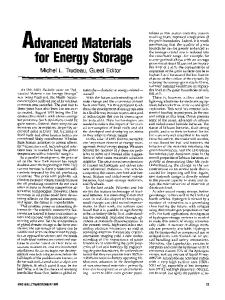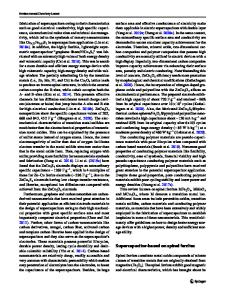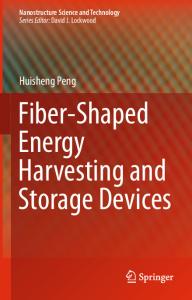DFT-Guided Design and Fabrication of Carbon-Nitride-Based Materials for Energy Storage Devices: A Review
- PDF / 6,407,992 Bytes
- 44 Pages / 595.276 x 790.866 pts Page_size
- 57 Downloads / 319 Views
REVIEW
Cite as Nano-Micro Lett. (2021) 13:13 Received: 13 July 2020 Accepted: 16 August 2020 © The Author(s) 2020
https://doi.org/10.1007/s40820-020-00522-1
DFT‑Guided Design and Fabrication of Carbon‑Nitride‑Based Materials for Energy Storage Devices: A Review David Adekoya1, Shangshu Qian1, Xingxing Gu1, William Wen1, Dongsheng Li2, Jianmin Ma3, Shanqing Zhang1 *
HIGHLIGHTS • Comprehensive summary of crystalline structures and morphologies of carbon nitride-based materials (CNBMs). • Density functional theory computation for the design of functional CNBMs for rechargeable battery applications. • The experimental synthesis strategies of CNBMs for rechargeable battery application.
ABSTRACT Carbon nitrides (including CN, C 2N, C3N, C3N4, C4N, and C 5N)
LIBs
-up
m
t
Do um
Ba
Nanosphere Li-Metal Battery
t an Qu
ry
s Self -a
CNBCs
tto Bo
-O Li
2
SI B
Na no t
Nanofibre
-state Battery Solid
Li-S Battery
l
Nanowire
rm a
d
material design, synthesis, and characterization of different CNBMs for the afore-
or od B at te ry
O2
application of first-principle studies and density functional theory for electrode
Zn
guide the experimental synthesis of CNBMs for energy storage, i.e., facilitate the
he
n Na
theme of this review is to apply the theoretical and computational design to
To
p Cx N -
CNBMs
o
Dope
lithium metal batteries, zinc-ion batteries, and solid-state batteries. The central
t ro Hyd
and potassium-ion batteries, lithium sulfur batteries, lithium oxygen batteries,
ly
y
emerging rechargeable battery systems, such as lithium-ion batteries, sodium
mb se
K
wn do
carbon nitride-based materials (CNBMs) and their application in existing and
Na n
Ny Cx
ties, theoretical advantages, the synthesis and modification strategies of different
Bulk
e ub
t ee sh
In this review, we provide a comprehensive review on these materials proper-
s
s IB
properties in crystalline structures, morphologies, and electronic configurations.
tte
are a unique family of nitrogen-rich carbon materials with multiple beneficial
mentioned rechargeable batteries. At last, we conclude with the challenges, and prospects of CNBMs, and propose future perspectives and strategies for further advancement of CNBMs for rechargeable batteries. KEYWORDS Carbon nitrides; Metal-ion batteries; Density functional theory; g-C3N4; Anode
* Shanqing Zhang, [email protected] 1 Centre for Clean Environment and Energy, School of Environment and Science, Griffith University, Gold Coast Campus, Gold Coast, QLD 4222, Australia 2 College of Materials and Chemical Engineering, Key Laboratory of Inorganic Nonmetallic Crystalline and Energy Conversion Materials, China Three Gorges University, Yichang 443002, People’s Republic of China 3 Key Laboratory of Materials Processing and Mold (Zhengzhou University), Ministry of Education, Zhengzhou, People’s Republic of China Vol.:(0123456789)
13
13
Page 2 of 44
1 Introduction Rechargeable metal ion batteries (MIBs) are one of the most reliable portable energ
Data Loading...











